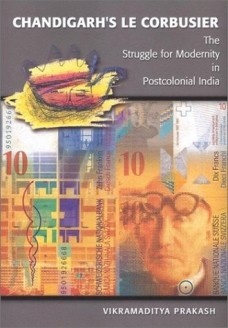Chandigarh's Le Corbusier
Chandigarh's Le Corbusier
The struggle for modernity in postcolonial India
Vikramaditya Prakash
University of Washington Press, Seattle; 1st edition, 2002
edition: english
hardcover
192 p
18 x 25 x 1,5 cm
600 g
illustrated
fullcolor
ISBN
978-02-959-8207-6
()

about the book
When India emerged from colonial rule in 1947, the division of Punjab left its historic capital, Lahore, in newly created Pakistan. Indian Prime Minister Jawaharlal Nehru insisted that Punjab's new capital, Chandigarh, should be a symbol of the nation's faith in the future, unfettered by the traditions of the past. Its design and construction galvanized national attention, and Le Corbusier, the icon of European architectural modernism, was invited to help remake India's national ideal.
Le Corbusier arrived in 1950, in the twilight of his career. He set to work alternately wooing and clashing with Nehru and with the Indian planners and builders, prevailing ultimately only in the design of the Capitol Complex and a few buildings in the Museum Complex, as well as in his enduring symbol of peace and nonalignment, the Open Hand.
Vikramaditya Prakash tells the story that lies behind the planning and architecture of Chandigarh. Drawing on his intimate knowledge of the city, where he grew up as the son of one of the nine Indian architects who assisted in designing Chandigarh, Prakash brings to light stories of town planners, bureaucrats, and architects vying over the colonial past and the symbolic future of India. Different conceptions of the modern and the role of Indian civilization clashed and coalesced in a process that highlights the mutual interdependence of "East" and "West," and the fact that architecture and aesthetics cannot be separated from ideological claims and political implications.
Prakash skillfully unfolds the intricate layers of the Capitol's symbolism, tracing the cultural preconceptions and influences that produced Le Corbusier's understanding of India and animated his obsessions, desires, and aspirations. Chandigarh's Le Corbusier is the story of the making of an Indian modern architecture as both an aspect and an engine of post-colonial culture.
about the author
Vikramaditya Prakash
Chair of the Department of Architecture, University of Washington.


